Lorette C. Luzajic tours an exhibition at the AGO, then eats a meal inspired by it.

Vincent Van Gogh, The Starry Night over the Rhone at Arles, 1888, Oil on canvas, 73 x 92 cm, Image courtesy the Musee d’Orsay, Paris, France/Bridgeman Images
If only for this moment, for this exhibition, turning a corner into a dimly lit room, and there it is, the blue and violet shimmer of the night Rhône, right here in Toronto.
There are some artworks you come across that you actually startle, or catch your breath. The impact of their beauty is visceral, emotional, and yes, mystical.
Vincent Van Gogh’s Starry Night Over the Rhône is the one painting in the Mystical Landscapes show at the Art Gallery of Ontario that you’ve seen at least a million times already, in coffee table books and on t-shirts in Kensington Market, on mouse pads and cocktail napkins. Yet I stood before it as a virgin, as an initiate of sorts, as if it was a ritual unveiling. It was a moment of sublime enchantment, the same hush, the same sense of awesome wonder I felt entering the sanctuary of the Thomas Fisher Rare Book Library for the first time. The night sky is where Van Gogh felt that magic hand of God, and in this moment I found myself drawing near to him as well, bound by the beauty, enchanted by all that I saw and by hidden things as well.
The exhibition, until January 29, 2017, brings an eclectic ensemble of painters together under the unique umbrella of the Mystical Landscapes theme. In the period just before and after the turn of last century, many artists felt disillusioned by the rapid social changes around them, whether technology or commerce or the city or war. On the heels of the industrial revolution and all of its changes in the world was a kind of informal movement towards reclaiming art for mystical experience. The bounty of the universe and the cosmic experience of awe at the natural world was a central theme in a kind of artistic imperative to rekindle and reawaken spirituality through beauty.
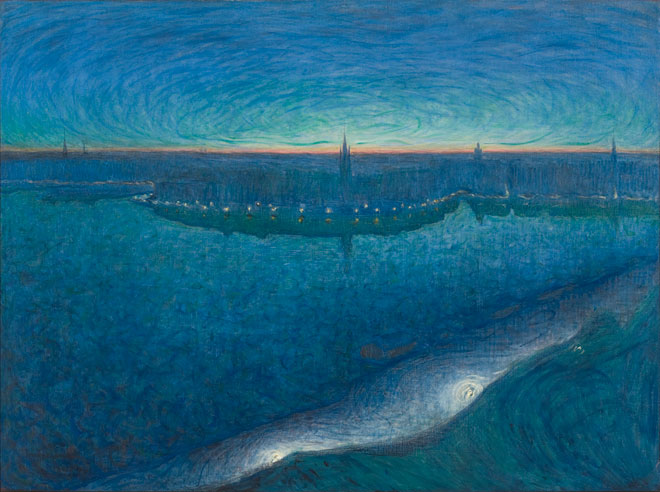
Eugène Jansson, Dawn over Riddarfjarden, 1899, Oil on canvas, 150 x 201 cm, Collection of Prins Eugens Waldemarsudde
Artists were painting in pursuit of revealing “divine imminence”- that God infused the material, natural world with his presence. Disillusioned with organized religion, they sought to take the spiritual out of the church, and blend a variety of traditions from ages past. They sought to show new explorations of old mystic themes like the dark night of the soul or the spiritual encounter in the wilderness. Romanticism had sought, to some degree, to portray the same subjects, infusing the natural world with meanings like purity, freedom, and spirituality. Many of these ideas found parallels and continuation in the works highlighted here.
Some of these highlights include giants like Monet, O’Keeffe, Gauguin, Munch, Whistler, Mondrian, and of course, Van Gogh. The exhibition also features works by Canadian artists like Lawren Harris and Tom Thomson, as well as artists who are famous in their own countries but have had little international exposure, such as Eugene Jansson.
On December 1 I was lucky to be invited to a tour with senior exhibition planner David Wistow. I learned a lot about how much planning goes into curating and executing an art show. This particular exhibition was especially complicated, assembling over 100 works from North America, Europe, and Scandinavia. Many of the paintings or drawings had never left their home museums.
I’ve never objected to paying $20 or more to see an art show because I think it’s a bargain. All art is priceless and some is mere millions. But for those wondering about having to pay so much to see special exhibitions, Wistow gave some insightful background into the planning. Every air-moved painting must be accompanied by a human being, and then that curator must fly back later to pick it up and escort it home. In this case, there were two people working on developing the program for five years, full time. Additionally, this show has the distinction of a team of advisors from areas of expertise outside of art history, including philosophy and astrophysics. Their roles added depth and context to the selection process.
The AGO’s on site restaurant is FRANK, named for Frank Gehry, the architect who recently redesigned the gallery. The restaurant is a sight for sore feet after a long gallery crawl, but it’s also an integral experiential part of the AGO visit. Creative minds here carefully curate cocktails and a menu that complements what you’ve just seen. As you and your companions discuss the show, you can enjoy the Mystical Landscape Prix Fixe menu.

For your starter, skip the perfectly pleasant but not as good as it sounds Celery Root Composition made with “salt baked celery root, fennel, candied walnut, orange coulis.” Choose instead the French Onion Soup- with candied thyme and gruyere, it’s a mystical experience, truly.
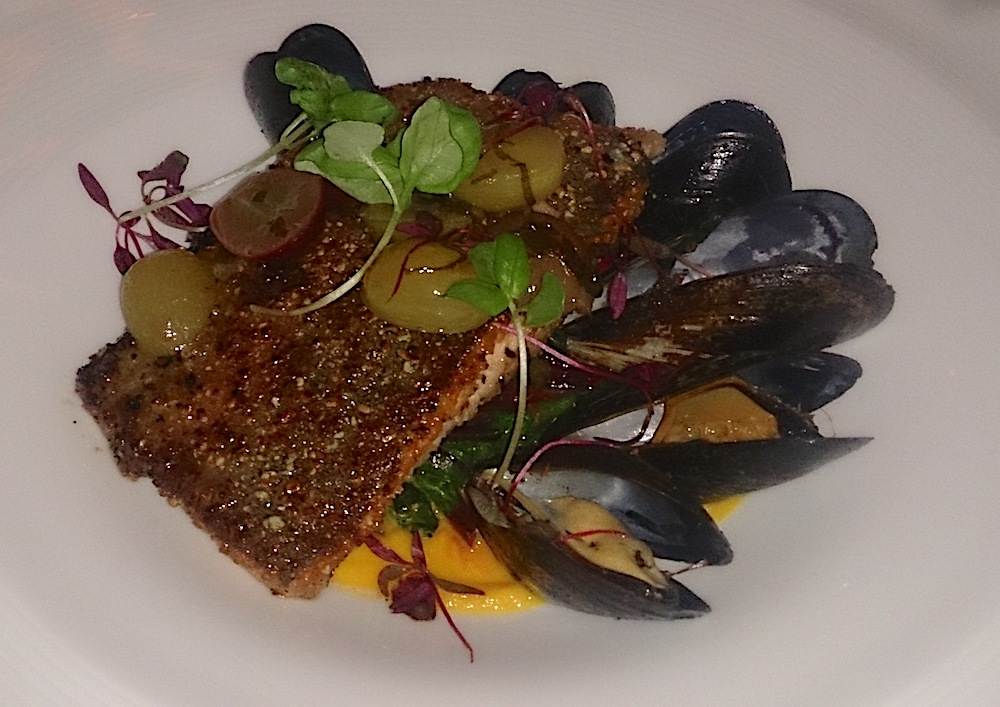
For the main course, it’s a real toss up between the Trout Meuniere and the Beef Bourguignon. The latter is melt in your mouth beef cheeks with “mostarda”- a fancy way of saying “mustard” – and maple roasted vegetables. It’s a hearty choice for the upcoming harsh winter days that you’ll be braving to get here. But how often do you get to have trout, never mind un-fishy, tender trout crusted with almonds and accompanied by our own east coast mussels and bitter greens? My solution was simple- I had both of them. My date and I chose respectively so we could share.
The dessert was a berry custard tart with creme fraiche.
Props to Executive Chef Renée Bellefeuille and Chef de Cuisine John Romick.
The other dessert was the themed cocktail, called Monet’s Garden. Frank’s bartender Stephen Gaessler is inspired by each exhibition to invent a drink that enhances the visitor’s experience. This delicious garden in a glass transports you to Giverny. It’s tart and sweet with a mouthful of berries and fresh dill, and a heap of edible flowers.
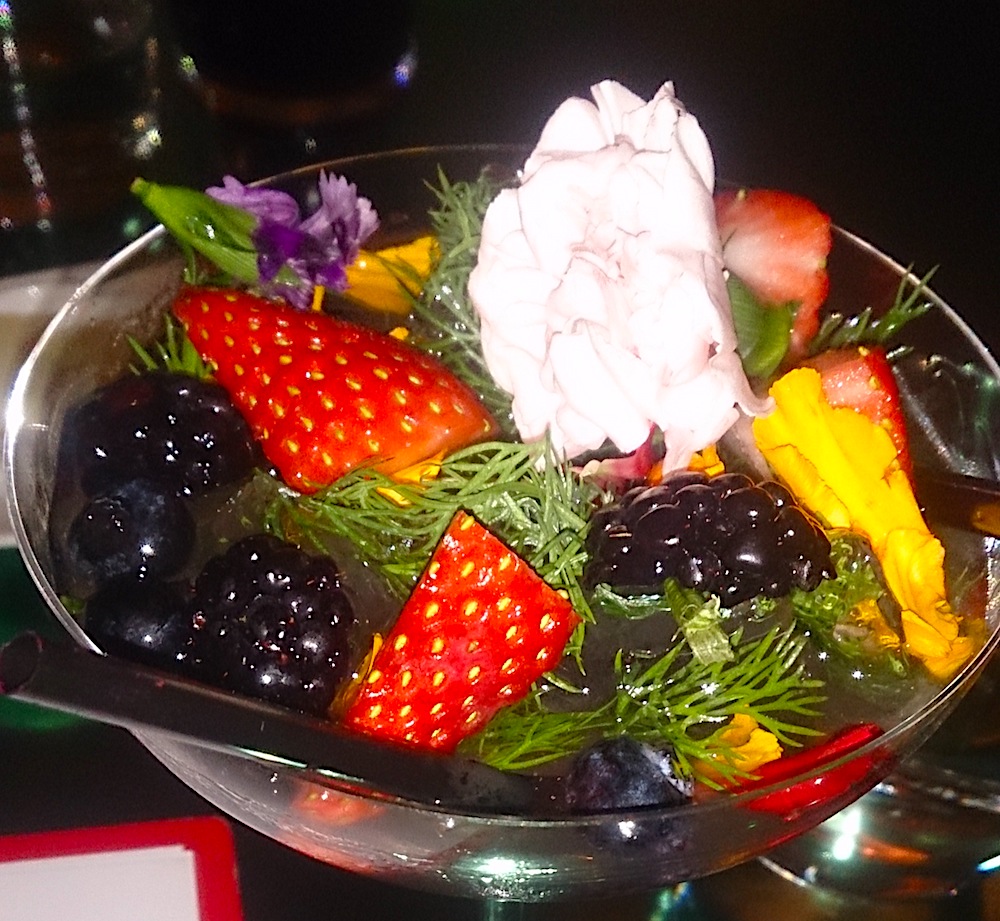
The drink was a splendid, lavish novelty but it’s the wine list that is more likely to get me back. In addition to the classics, some interesting regions are represented- for example, red wine from Lebanon (Chateau Musar Red 2004, Bekaa Valley). I had Penfold’s Bin 2 Shiraz/Mourvedre 2013, South Australia and it was plush and divine.
Don’t wait too long for this dreamy trilogy of food, wine, and art. It’s on until the end of January, but you’ll want to do it twice.
Image credit: the feature image for this post, on the home page of goodfoodrevolution.com is Paul Gauguin, Vision after the Sermon (Jacob Wrestling with the Angel), 1888, Oil on canvas, 73 x 92 cm, Scottish National Gallery © National Galleries of Scotland.

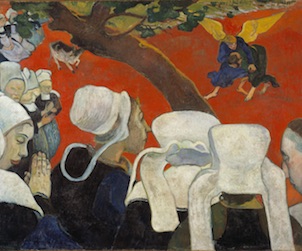


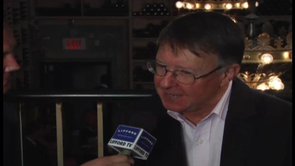
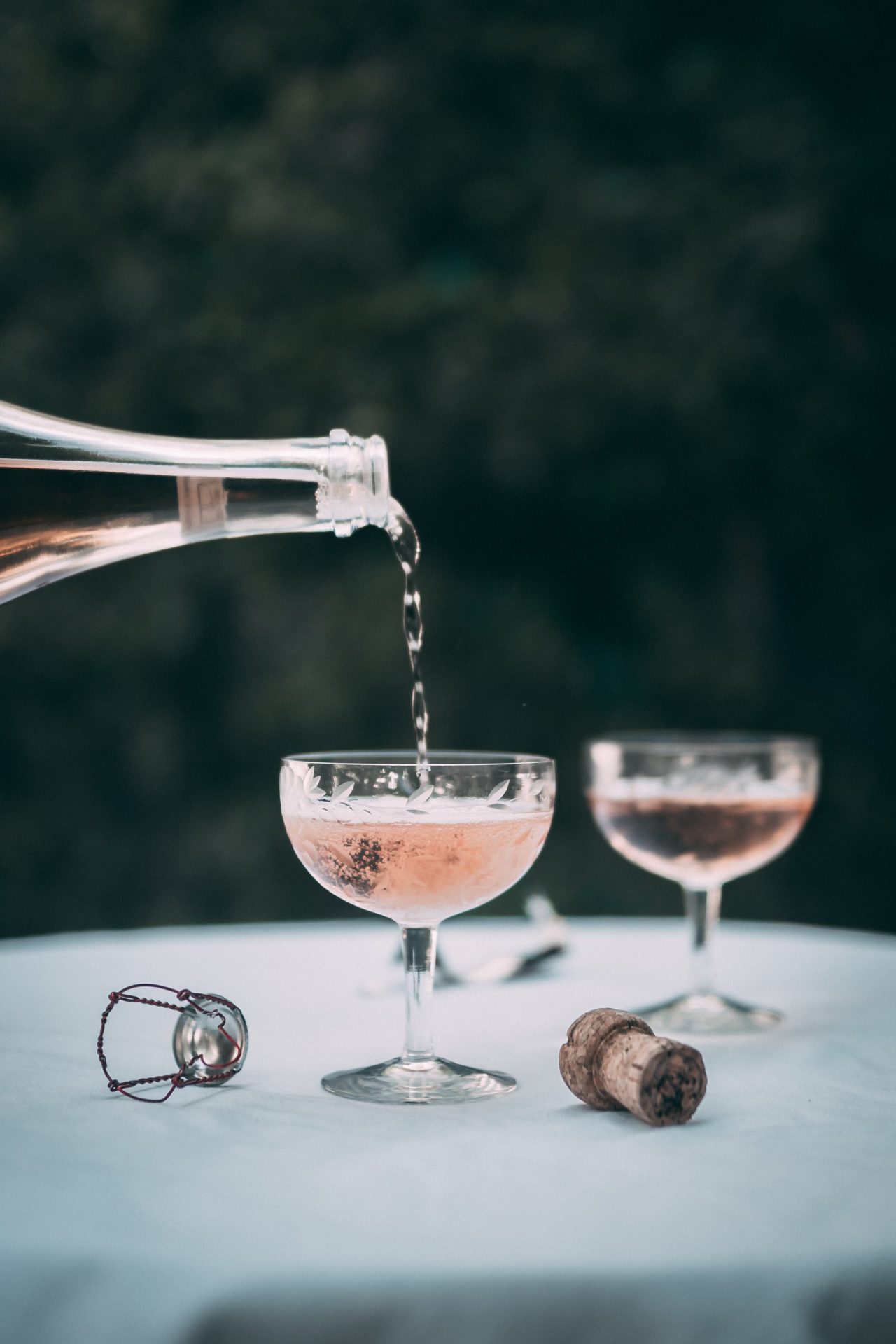
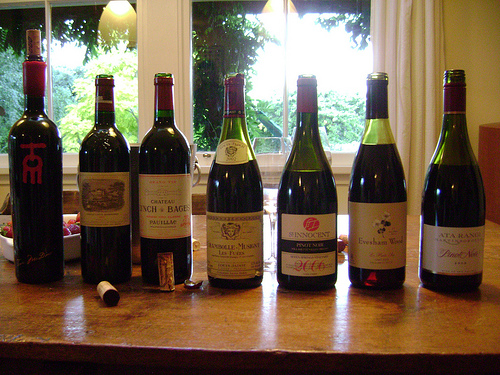

Mostarda is absolutely a fancy (or at least the Italian) word for mustard, but it may also refer to Mostarda di Cremona, which is a fancy Italian mustard, indeed. It features preserved fruits in mustard oil, so it’s both a little sweet and quite hot.